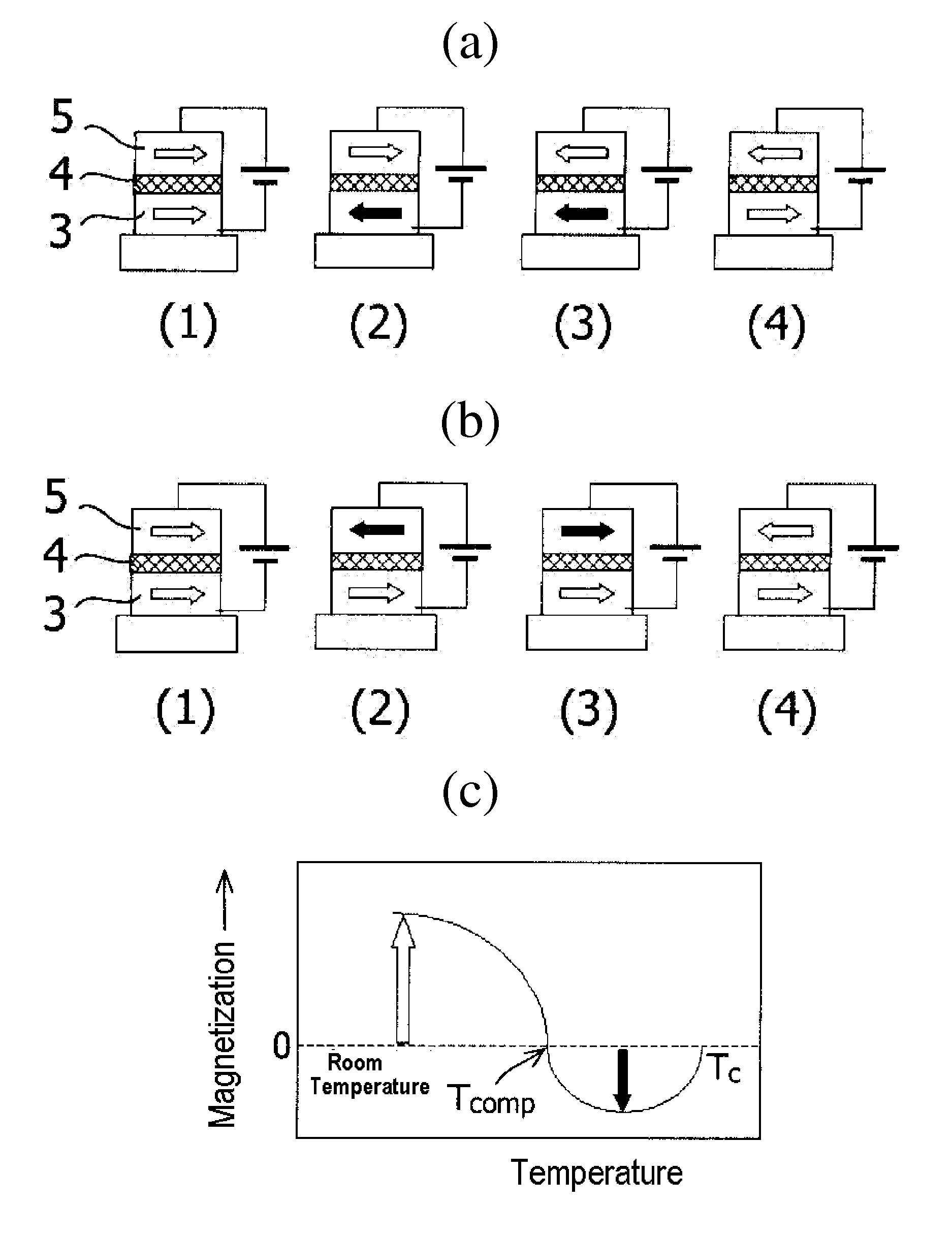Magnetic memory element, method of driving same, and nonvolatile storage device
a technology of magnetic memory element and magnetic memory element, which is applied in the direction of digital storage, galvano-magnetic material selection, instruments, etc., to achieve the effects of high integration level, low cost and high performance non-volatil
- Summary
- Abstract
- Description
- Claims
- Application Information
AI Technical Summary
Benefits of technology
Problems solved by technology
Method used
Image
Examples
second embodiment
[0073]Next, an example of the configuration of a nonvolatile storage device (device of this invention), using elements of this invention as memory cells, is explained using FIG. 10 and FIG. 11.
[0074]FIG. 10 schematically shows a magnetic memory element and a rectifying element comprised by a cross-point type memory cell array, which is a practical example of a nonvolatile storage device of this invention. As already explained, by means of a magnetic memory element and a method of driving such an element of this invention, switching using single-polarity electric pulses is possible. A rectifying element (here, an example of a diode is shown) is connected in series as a selection switch for the element, and by forming upper electrodes and lower electrodes in an array shape, a cross-point type memory is formed. For example, diodes can be formed in advance on a Si substrate, and magnetic memory elements of this invention can then be formed thereabove. By applying positive-polarity elect...
PUM
 Login to View More
Login to View More Abstract
Description
Claims
Application Information
 Login to View More
Login to View More - R&D
- Intellectual Property
- Life Sciences
- Materials
- Tech Scout
- Unparalleled Data Quality
- Higher Quality Content
- 60% Fewer Hallucinations
Browse by: Latest US Patents, China's latest patents, Technical Efficacy Thesaurus, Application Domain, Technology Topic, Popular Technical Reports.
© 2025 PatSnap. All rights reserved.Legal|Privacy policy|Modern Slavery Act Transparency Statement|Sitemap|About US| Contact US: help@patsnap.com



